Help Entries
HINT: Try to include specific words or acronyms that you think might be included in the help entry you are trying to find. For example, if you want to know how the DRAT rating is calculated, just enter "DRAT".
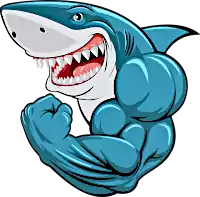
Scoresheet Trading Scams
Scoresheet waters are full of sharks. Your best defence against scammers is to understand the tactics and strategies that they use. Typical Scoresheet scams involve some combination of getting another player to accept a trade on the basis of inflated or dimished asset values. What follows is a list of some of the more common Scoresheet trading scams.
- Hospice Scam: In this scam the owner trades an injured player to another owner who is unaware of the injury status of the player involved. This is perhaps the oldest scam in the book, and one that has a good chance of ending up with an officially reversed trade. Always, always, always check up on the injury status of players involved in a trade before you make a trade, including players you are trading. A fast way to check injury status is to do a search for "cbs fantasy news [player name]"
- Evil Twin Scam: This is a scam where an owner switches the target player of the opposing owner with another player with the same name. This is one of the dirtiest trading tricks in the game and will absolutely result in a reversed trade when caught. Always, always, always double and triple check trades before you confirm them. Make sure player names match, and player numbers match.
- Matching Round Scam: This is a scam where an owner switches a later pick in a round for an earlier pick, where that owner has multiple picks to trade from the same round. As is the case with many "scams", it isn't always intentional, accidents do happen. Always, always, always, double and triple check to make sure that, not only are you receiving your desired pick, but you are actually trading the pick you intended to trade.
- Bullshit Baffles Brains/Kitchen Sink Scam: This is a scam where an owner attempts to trade many low value players for one high value player. "I threw everything, including the kitchen sink, at that trade!"
- Hot Catcher Scam: Where an owner attempts to trade a catcher who is on a hot hitting streak, but is unlikely to keep hitting that way. It isn't always a catcher, but often it is. Everyone needs catchers, and catchers tend to run hot and cold, moreso than other positions, in part because catcher is one of the most physically and mentally demanding positions to play, and as a corollary to that, they don't get as many regular at bats as other hitters.
- Hot Baby Scam: This is a variation on the "Hot Catcher Scam". It's cagey and requires smart scouting and an in depth understanding of what is happening in MLB's minor leagues. In this case Sir Shark drafts a number of minor leaguers that are not super high end prospects, solid but unspectacular. Hitters don't just get hot in the majors, they do that in the minors as well. Sir Shark waits for his minor leaguers to get hot, and attract some buzz, then trades them while their value is high. The key to this scam, and what makes it a scam, is that the perpetrator doesn't expect the hot streak to last, and Sir Shark is usually right.
- Fading Star Scam: Where an owner attempts to get another owner to overpay for a former star who is in a funk that appears likely to last for the rest of his career.
- One Foot in the Grave/Retirement Scam: Similar to the "Fading Star Scam" this is where an owner attempts to get another player to overpay for a star player whose days of meaningful contribution are over and who is on the verge of retiring. Hey, we all have our favourite players!
- "And One" Draft Pick Scam: It goes something like this, "Sure we can make that trade, but I can't do that trade straight up. I'll need a little something extra to make it work..." Just throw in that rd 30, or rd 35... Meanwhile that low round draft pick allows Sir Shark to protect yet another hot prospect who will probably be worth more than any of the other players involved in that trade.
- Prospect Capital Scams: In a lot of leagues in Scoresheet "hot prospects" are treated like currency. They are probably years away from being productive major league players, and they are one of the most overvalued assets in the game.
- Amateur Draft Round Scams: In most leagues in Scoresheet the supplemental rounds where the players from that season's MLB amateur draft first become available are considered to be among the most valuable draft picks of the season. It is common for veteran owners to prey on less experienced owners and "acquire" those picks for far less than their accepted value. "Supp picks aren't worth much, but I'll help you out..."
- Undervalued Draft Pick Scams: When you trade a pick for a player, it is a multi-asset trade. You are trading that pick, and getting a player in return presumably for the current season, if you trade away the pick during the off season, the deal becomes even more unbalanced. You are trading away the player you would have picked for that player. If you end up protecting that player, you are also trading away the player you would have protected in that player's place. Not only that, but you are going to be down a player for the entire next season.
If it's a late round pick it may appear that that pick doesn't have much value, although useful, productive players are always available, so there is no such thing as a draft pick that has no value. But more importantly, late round draft picks are used to protect minor league prospects, which can have a great deal of value. So that rd 30 - 35 "throw in" can afford the owner who receives it a great deal of value, and should not be offered lightly.
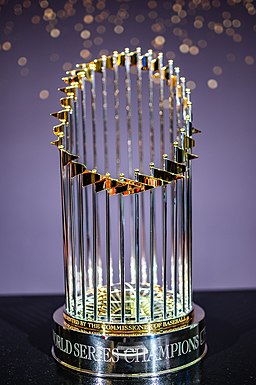
Amateur Draft Round
The supplemental draft that includes the amateur draft rounds is one of the highlights of the Scoresheet year. It is the round of supplemental drafts when the players from that year's MLB amateur draft become available. Those draft picks are typically very valuable, especially in "BL" leagues.
In previous years that draft round was rounds 40 and 41, in recent years it has been rounds 42 and 43. Starting in 2024 those rounds will be round 45 and 46.
Erik Drost, CC BY 2.0, via Wikimedia Commons

Blood Dolls
Every league has them. "Blood dolls" are the owners that enable owners with dominant teams to maintain their dominance. You might not notice them when they make a trade, and specific trades might not seem unbalanced, but when you add all the trades they make with their "vampire" up, you will see a repeated pattern of trades that favour the dominant team. Typically there will be a common thread, something the "vampire" offers that the "blood doll" finds irresistible.
The results will also be consistent. The vampire team will consistently be a top team in the league, while the blood doll team will flounder. Do you want your team to be a "blood doll" for a dominant team? Probably not...
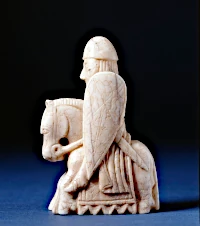
Winning Trades
There are two ways to acquire players in Scoresheet, one is through trades and one is through the draft. Drafting well is the absolute bedrock for building a winning team, but trading well can put your team over the top. So how do you "win" trades in Scoresheet Baseball?
Let's start with the word "win". One of the most common mistakes made when approaching trades is the idea that you need to "win" every trade that you make. Scoresheet is a game with a very long "play arc" and the wisest and craftiest owners play the game as it if were chess, always trying to think several moves ahead of every other owner in their league.
There are some who say that the team that gets the best player in a trade, has "won" the trade. That's a good basis to start on, but that idea does not even begin to capture the subtleties of making trades in a Scoresheet league. One thing you do not want to do is make a trade where the result is that the other owner never wants to make another trade with you.
Trading in Scoresheet is a psychological and social game as well as a strategic game. You want to trade, as much as possible, from strength to weakness. In other words you want to trade from a surplus your team may have, to shore up a deficit your team may have. Sometimes it is also a good idea to allow another player to "win" a trade with you.
Good will and friendship are a great foundation to build future trades on.
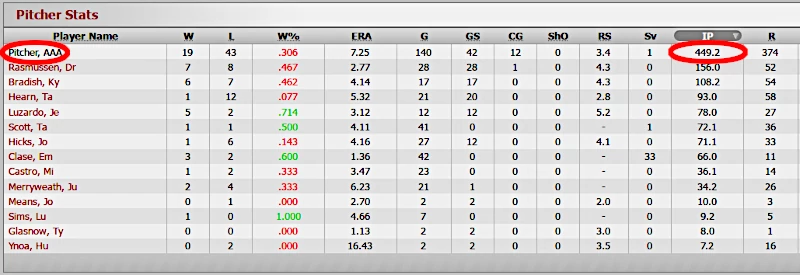
Scoresheet's Three Most Common Mistakes
- Trading away too many draft picks.
- Protecting too many minor leaguers.
- Not discussing trades before they are made.
Here's the thing about draft picks. In a standard rules Scoresheet continuing league, when you trade away a draft pick, it's really a 3 for 1 deal. Bear with me while I explain. First off you are trading away the draft pick. That's one. Then you presumably have to drop another player to make room on your protected list for the player you just traded for. That's two. Then you are down one body for an entire season. That's three. I would never tell anyone not to trade draft picks, far from it, just be aware that you can't trade many picks before you put your next season in serious jeopardy.
Protecting too many minor leaguers is related to the mistake of trading away draft picks. Every minor leaguer you protect is one less active body playing for your team. Scoresheet rosters are capped at 30 for a reason, that is about the number you need to avoid replacement AAA players, and you will need more pitching on that 30 person roster than you need position players, not to mention that Pitcher AAA will hurt you more than a AAA position player. Very few rookies make a big splash when they make the majors, so even when that minor leaguer is finally providing innings pitched or at bats, they may not be productive innings pitched or at bats, for a season or two.
We're all human. Typically the first thing any owner wants to do when they pick up a team is make a big splash, and put their mark on their new team. That's when it would be wise to take a deep breath and count to more than ten. Find someone you trust you can bounce trade offers off, before you say yes. If you get a trade offer, shop around and see if you can get a better deal. The only Scoresheet owners that don't make bad trades aren't playing the game, but you can lessen the probability for disaster greatly if you follow two simple rules.
- Never make a trade without discussing it with a friend.
- Never make a trade without seeing if someone else can make a better offer.
WHIP
Walks plus Hits per Inning Pitched
This rating is most often applied to pitchers, in these stats it is applied to both individual pitchers and to teams.
Formula:
( [Total Walks Allowed] + [Total Hits Allowed] ) / [Total Innings Pitched]
ERA
Earned Run Average
One of the most oldest and well used baseball statistics in the history of the sport. It represents the number of earned runs scored against a pitcher per 9 innings pitched. Runs scored as a result of fielding errors and passed balls do not count toward a pitcher's ERA, while runs scored as a result of wild pitches do. If a pitcher leaves a game the runners already on base will count toward the pitcher's ERA if they score.
In Scoresheet ERA is the single most important pitcher statistic. The Scoresheet game simulation does a very good job of recreating the pitcher's real life ERA, modified of course by the total team range rating.
Player Range
Player ranges are among the most complex elements of the Scoresheet game sim mechanics. Player ranges determine how many Outstanding Plays your team will generate, as well as how many Double Plays your team will turn. Half of the range rating of infielders is a standard Scoresheet range rating, and half is a double play rating. Players playing CF have their range rating doubled.
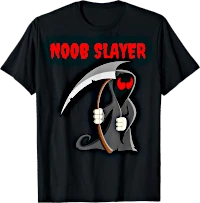
We All Need Noobs
I've been active in a number of online communities over the past few decades. It's pretty easy to separate the healthy communities from the unhealthy ones. It all begins with the way new members are treated.
Healthy online communities understand that online there is always a great deal of "churn", and their survival depends on a constant supply of new members. Healthy online communities treat new members with respect and kindness, and they put up with them wanting to discuss the same old topics, over and over again, because for the new member, those topics aren't old, they are new and fresh.
I played Scoresheet way back in 1996 and then took a two decade sabbatical from baseball. In 2019 and 2020 I picked up a couple of Scoresheet teams. So even though I've played a lot of fantasy baseball in my time, I was essentially a noob.
In 2021 I decided to participate in the Mock Draft. I thought that this was a great place catch up on two decades of missed time, talk some baseball, learn some tricks, have some fun and maybe even make some new friends.
I was wrong.
I was enthusiastic. I dove in with both feet. I had a lot of ideas. I had a lot of questions. I was told to shutup, multiple times, in multiple ways, directly and indirectly, privately and publicly.
It culminated with me drafting Myles Straw.
When I picked Myles straw, one of the established "pillars" of the Scoresheet Mock Draft community rage quit the Mock Draft chat. The feedback was immediate, and it was fairly vicious. At that time I didn't have the confidence, or the desire, to engage in an all out online brawl, so I quit the draft and left my team for someone else to pick it up.
The thing is, most Scoresheet owners use the same resources to rate their players. They use the same metrics, take advice from the same "experts" and the same few established sites.
I don't. I have my own ideas, I value players using metrics that are widely available, but I don't use them in the same way that most owners in Scoresheet do. I tend to value the same players that other owners do, but I occasionally find treasures that others don't, because I have something that is unique to me: a different perspective. And occasionally those "treasures" don't pan out—something that can be said for anyone who plays fantasy baseball.
But this really isn't about me, this isn't about Myles Straw, this is about online communities and the way they treat new members, and specifically new members with different perspectives. Myles Straw just illustrates the point.
Every online community needs noobs. Every online community needs to treat those "noobs" with patience, kindness and respect. The ones that don't will die. Every healthy online community, no matter how old and well established that community is, needs constant renewal from new members and the different ideas and perspectives that they may bring.

Stages of Rebuild
In professional sports, and in fantasy sports such as Scoresheet Baseball, where you actually build and play teams, there are four pretty clearly defined stages of team building:
1. Disaster Recovery
2. Rebuilding
3. Win Now
4. Domination
Disaster Recovery
The first stage is the most discouraging, and the most difficult to move out of. It tends to be a bit easier in Scoresheet in AL/NL only leagues due to high value free agents changing leagues, but in BL leagues moving out of that first stage can be extremely difficult. It is the stage where nothing is going well, where your options for trades and reshaping your team are limited because your team will have very few assets with any value. The end of the tunnel can seem a long distance away and very dark in this stage.
The focus in this stage should be on accumulating assets with value, even if they don't match your team "philosophy". Even if you don't like them. In this stage you need to take advantage of high round draft picks to pick the players that have the most perceived value, regardless of position or injury status. The key to this is research. Find out who the most coveted players in the amateur draft are, keep an eye on the international signings, snatch up the crumbs with value that other teams let fall. In this stage your team will not have chips to play with, and you need to accumulate those.
Thankfully very few teams actually fall this far, but it can, and it does, happen. If you have a team that falls into this category you need to take on the mindset of a hoarder. Hoard those players that have value, no matter who they are. Always be ready to take advantage of good trade offers, but in all likelihood, in this stage, your focus should be on building through the draft, and if you do make trades, ignore all positional factors, focus on players that have trade value, more than anything else. Your team is going to lose a lot in this stage, embrace it and have fun with it.
Rebuilding
This is the stage where you need to make specific goals and plans for your team, without losing sight of the fact that winning teams win with good players. What kind of team do you want to build? What kind of lineup do you want to build? Winning teams need at least something of everything, they need both run prevention and the ability to score, but you can choose to focus on one or the other, or take a balanced approach. This is the time to start spending those chips you accumulated and focus on making smart trades.
In some ways this is the most fun stage of all the stages, and some owners never leave this stage, because, apparently, that's what they enjoy. Winning at this stage should not be a big concern, but at some point, if your plans are well made and players are developing, you should start to see your team become more competitive. You shouldn't see the unending strings of blowout losses that are a feature of the first stage. Your team will still likely be losing a lot of games, but they should be closer, and you should see far fewer blowout losses.
In this stage you will want to start thinking about your team's "competitive window". Focusing on youth is a good idea, but more important than that is trying to build a team where, if all goes according to plan, most of your core players will be in their prime years at the same time. The key to this stage is patience. Understand that most young players entering the league for the first time will struggle. It can take as much as five full seasons for a minor leaguer to make that transition to the major leagues, that time frame can be even longer for pitchers than it is for position players.
Win Now
This is the stage that most of the well managed teams in Scoresheet consistently exist in. You've build a solid core, you have a grand strategic vision for your team, it's time to fill in the holes, build depth, and spend your time playing whack-a-mole with the injury gremlins that pop up. The keys to this stage are to not trade away too many draft picks and not protect too many minor leaguers. If you are going to win consistently in Scoresheet you need, more than anything, to avoid Pitcher AAA, and to do that you need to draft and hoard pitching, pitching, and more pitching.
This is the stage where you get to just "play the game". Have fun with lineup strategies, plot to throw wrenches in the spokes of your fellow owner's bicycle wheels, relish the carnage. As long as you are within 3 games or so of a playoff position at the end of August, and you have a full roster with some depth, you have as good a chance as anyone to win a championship.
This is also the stage where you need to start thinking about "maintenance" and "churn". You don't want to fall back into stage 1, whatever you do, so you need to think about replacing core players as they near the end of their playing years, or develop physical problems. This is the stage where you need to start thinking about building a "farm system". You don't want to protect too many minor leaguers, but you do want to protect a few quality ones. The focus there should also be on value, rather than positional or philosophical objectives. You can always trade a player with value for a piece you need.
Domination
This is the final stage of team building, and it is a stage that few teams ever reach. It is also the most difficult to maintain, and can even be harmful to a Soresheet league's health. Thankfully, in Scoresheet, it doesn't guarantee championships. Scoresheet playoff mechanics ensure that any team that is within range, with some depth, at the end of August, can win a championship, you just need your team to have a good September. So while having a dominant team can be good for the ego, it doesn't guarantee championships, not by a long shot. And if you've brought your team to this level, you no longer need my advice, so you aren't going to get any of that here.
How Do I Tell What Stage My Team is In?
When you are mucking around in the basement of your league, and looking for some light at the end of the tunnel of lopsided losses and Mr. Pitcher AAA, it can be a little difficult to know exactly what stage you are in, and whether or not any of the advice given here applies to your team. As is the case with this entire article, here are some ideas, you can take them or leave them, as you like.
I use something I call "The Star Index", although it might be more properly called "The Super Star Index", as one tool to help assess what stage of team building my team is in. While the judgment can be somewhat subjective a "star" for the purposes of the index rating is a player that the vast majority of baseball fans will look at and agree, "that's a star". These are "impact players", players that, if you drop your team, will be a reason why a potential owner would pick up that team.
For the purposes of this rating a player like Mookie Betts would be a "star", while a player like Randal Grichuk, no matter how much you may like him, would not be. While most star players have an established track record some few players merit the "star" rating before they've played a game in the majors. Wander Franco was one of those. Star players should also have some form of long term value as well, so Corbin Burnes would qualify as a "star" while, even though the point could be argued, perhaps Max Scherzer and Justin Verlander do not. It can get a little messy, but most of the time it is not.
So a quick rule of thumb would be the rule of twos. A team in stage one, Disaster Recovery, will likely have a Star Index rating of 0. A team in stage two, Rebuilding, would likely have a star index rating around 2 A team at the Win Now stage might have a Star Index rating of 4, while a team at the Domination stage might have a Star Index rating of 6 or better.
Another quick way to judge how strong your team is to build a quick protected list. Try to be objective. A protected player should be one that is better than most of the players available in the draft, especially in a BL league, although in an AL/NL only league the players at the top of the draft, free agents that have changed leagues, will likely be better than most players that most owners protect. I'm also not talking about protected minor leaguers, I am talking about players that will help your team win games, and most protected minor leaguers are not going to do that, with a few notable exceptions.
If you are having a hard time putting together a list of 13 protected players, there is a good chance you are either in stage 2 or stage 1. If you can objectively find only 8 or less on your team that are worth protecting, there is a very good chance you are in stage 1. Teams in stages 3 and 4 will typically have lists of players worth protecting that are much longer than 13 players.
And of course, the final, most obvious measuring stick for your team is it's winning percentage. If you have a winning percentage at the end of a season that is lower than .400, there is a very good chance you are in either stage 1 or stage 2. Stage 2 can run the gamut from as low as .300 to as high as .500. I think to be legitimately in stage 3, your record in Scoresheet needs to be .500 or better, and if your record at the end of a season is .600 or better, you are flirting with stage 4, Domination. If your team record is .700 or better, especially for more than one season running, you have probably arrived at stage 4, Domination, and some of your fellow owners might be getting discouraged.